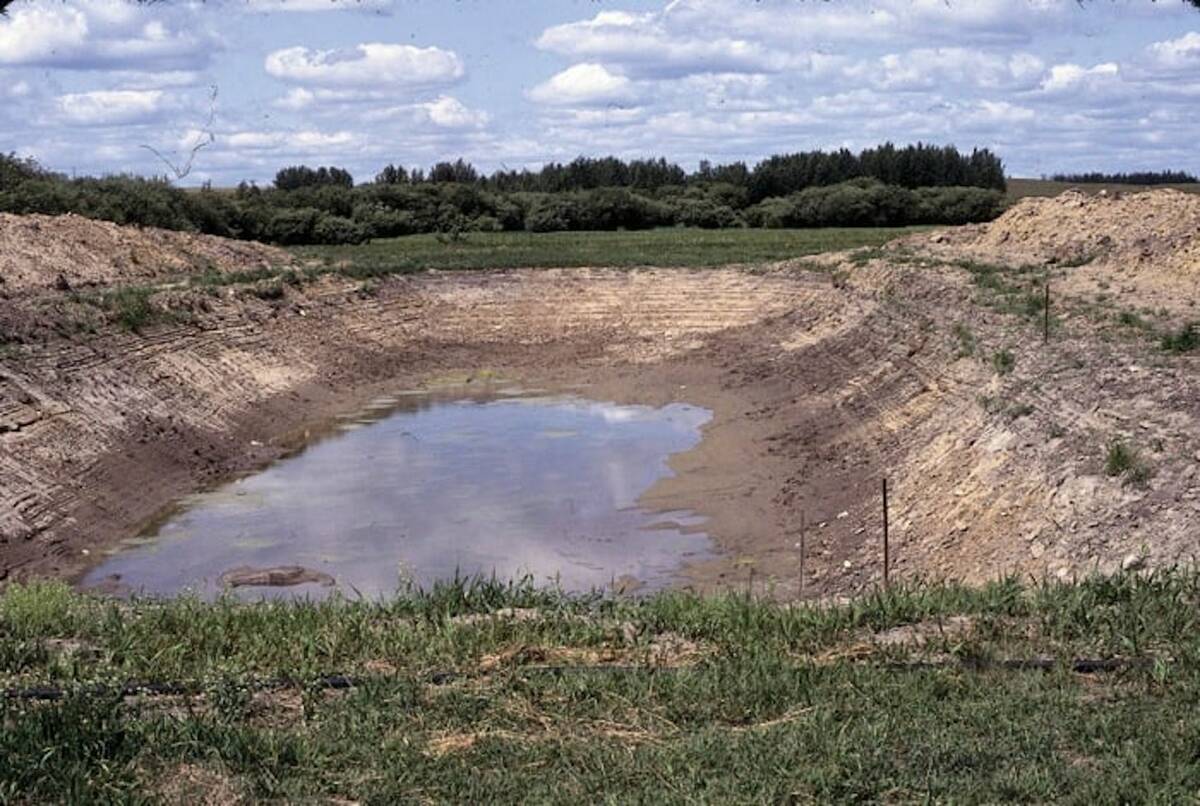Everyday household items can be surprisingly toxic to dogs. And with their curious nature and indiscriminate eating habits, dogs have ample opportunity to eat the things they shouldn’t.
Chocolate
Chocolate is one such toxin. Dogs are most often exposed during holiday seasons when chocolate is abundant in homes, such as Christmas, Valentine’s Day and Easter. Methylxanthines in chocolate cause over-stimulation of the nervous system, resulting in hyperactivity or sleepiness, poor co-ordination, salivation, tremors, vomiting, diarrhea and irregular heartbeat.
In large doses, coma, fever and death can occur. Dark varieties of chocolate with high cocoa content are the most toxic due to higher concentration of methyxanthines compared to milk chocolates.
Read Also

Dry summer conditions can lead to poor water quality for livestock
Drought conditions in the Prairies has led to an decrease in water quality, and producers are being advised to closely monitor water quality for their animals.
Onions and garlic
Fresh, cooked, and even powdered forms of onions, garlic and similar plants cause irritation in the intestines. More seriously, they damage red blood cells, leading to anemia. Dogs with anemia have pale gums and lack energy. Damaged red blood cells excrete a molecule that colours urine dark red to brown. Be extra careful to avoid feeding these items in kitchen scraps, as that is a common way for dogs to become exposed.
Grapes and raisins
Perhaps the most unexpected household toxin for dogs is grapes and raisins. The exact toxin in the fruit is unknown but the consequences in dogs are well established. Signs of grape or raisin intoxication include vomiting and diarrhea followed by kidney failure.
Increased drinking and urination are the first signs of kidney failure in dogs, which happen after more than 75 percent of the kidney is damaged.
In the later stages of grape toxicity, the kidneys stop making urine. Treatment at this stage is usually unsuccessful and these dogs usually die or are euthanized. Interestingly, some dogs appear more susceptible to grape toxicity than others, although the reason behind this variability is unknown.
Human medications
Dogs commonly get into over the counter and prescription human medications with potentially deadly consequences. Signs vary by medication but may include vomiting, diarrhea and kidney failure.
As you would with children, never leave medications where pets can access them. And never give human medication to your pets unless directed by your veterinarian.
Xylitol
Xylitol is an artificial sweetener found in sugar-free gum, candies, baking and toothpaste. Dogs react to xylitol like it is sugar, triggering insulin release. This causes blood sugars to drop to dangerously low levels, similar to a low blood sugar reaction in a diabetic. Additionally, liver failure and blood clotting abnormalities develop in some dogs a few days after exposure. Signs of xylitol intoxication in dogs include vomiting, weakness, lethargy, coma or death.
Vitamin D toxicity
Finally, vitamin D toxicity can cause kidney failure and excessively high calcium. Reports of vitamin D toxicity are on the rise, likely due to increased supplementation by people.
If you know your dog has ingested a toxin, collect the evidence. Bag up any vomited or partially chewed material, as well as any packaging. This can be essential to determining the approximate dose consumed by the dog.
Contact your veterinarian immediately for further instructions.
There can be a delay, sometimes days to weeks, between consumption of a toxin and onset of illness. Even if your dog looks OK after ingesting a toxin, contact your veterinarian to determine if any treatment is necessary.
As with most diseases, early treatment can usually prevent the most serious toxic consequences.
Depending on the toxin, inducing vomiting may be recommended. Activated charcoal is often administered to absorb toxins from the gastrointestinal tract. Intravenous fluids maintain hydration and in the case of kidney toxins, to flush out the tissues and minimize damage.
Specific treatments for individual toxins may be necessary. For example, sedation may be used for toxins that cause excitability or seizures. Blood testing may be done to monitor red blood cell numbers (an indication of bleeding), organ function and electrolyte balances. Hospitalization with ongoing monitoring may be necessary.
Minimize exposure to these potential household toxins by carefully storing all medications and harmful products. Be mindful when preparing food and if you decide to feed kitchen scraps, make sure they are free of grapes, raisins, garlic and onions.

















